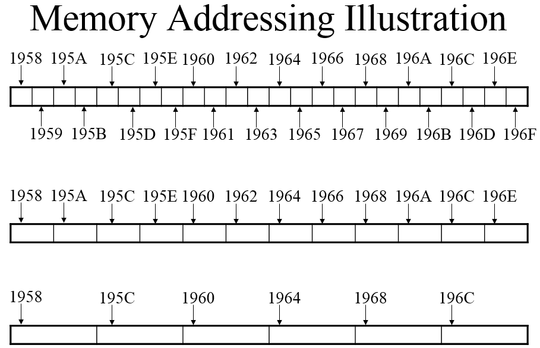2
Here is the problem I am working on
The Problem :A high speed workstation has 64 bit words and 64 bit addresses with address resolution at the byte level. How many words can in be in the address space of the workstation? Assuming a direct mapped cache with 8192 64 byte lines, how many bits are in each of the following address fields for the cache? 1) byte 2) Index 3) Tag?
I am trying to make sure I understand every term in the problem before I attempt to solve it. I understand the problem until the phrase "with address resolution at the byte level".
Does anyone know what this phrase means in this context? I know what a byte is and what an address is. An address would specify a location in computer memory that contains an instruction or data.
I did a Google search for this phrase but the results I got had to do with ARP, a protocol for mapping IP addresses but this question has to do with computer organization, not computer networking. I guess another way of asking this is does anyone know what this term means in a computer organization sense?

1Try searching for "byte level addressing" or "byte-addressable" instead. – user1686 – 2015-05-31T00:59:44.427
1Ahh i see thank you. So the way I understand it. The processor processes a word at a time. A word is made up of bytes. Byte level addressing supports accessing individual bytes inside those words? – committedandroider – 2015-05-31T01:03:32.163
@committedandroider - Not strictly true: byte-level addressing supports the addressing of bytes within a word; whether these bytes can be accessed depends on the CPU instruction set. In practice, most CPUs allow byte strings to be compacted within words and provide instructions to access them individually, and in such cases your assertion is correct. – AFH – 2015-05-31T01:46:22.763